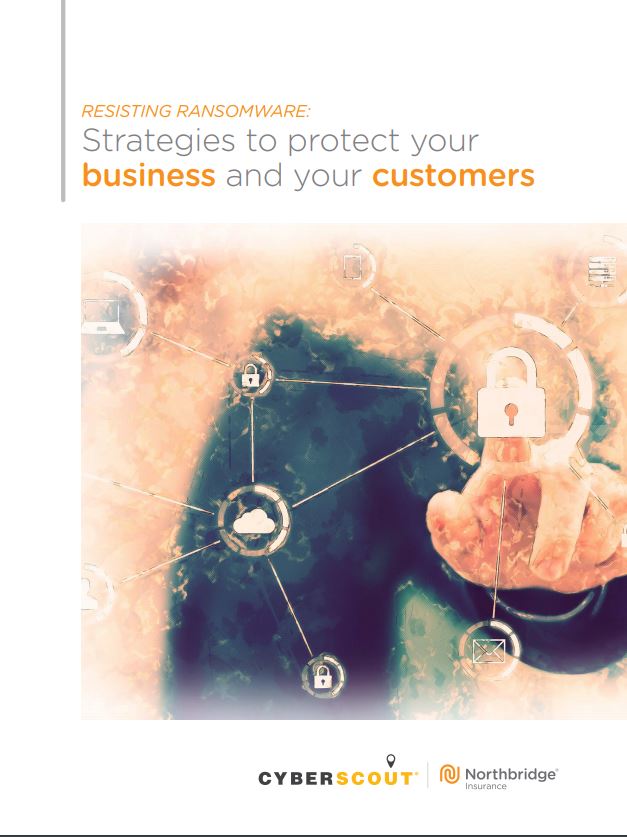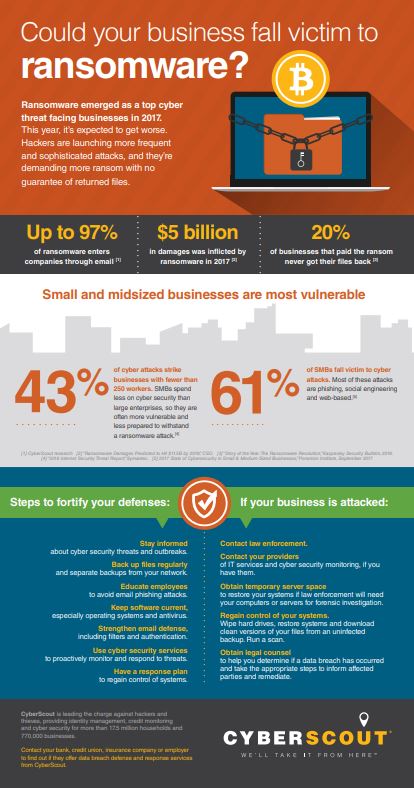Do you deal with data? Even if your operations aren’t steeped in digital transactions, your ransomware risk could be higher than you think. That’s because any business that uses computers and the internet faces cyber risk, and could be hit with a ransomware attack. 
How would your customers respond if you told them you’ve lost their data to a digital thief? How long could you continue to pay your operating costs while your system – and revenue stream – is frozen? Do you know what you can do to recover? There’s a lot on the line, and a single breach could cause big problems. Here are some helpful facts and smart tips to help you stay in control of your data (and your bottom line).
Want to learn more? This white paper takes a deeper dive into ransomware risk, defence strategies, and recovery tips.
The ransomware risk is real – and it’s growing
Ransomware isn’t a new tactic, but it’s evolving and appealing to more cyber criminals than ever. There are a few reasons behind its rising popularity:
It’s efficient. Ransomware can quickly tap into a company’s crucial revenue source and reliance on their data. Businesses are often compelled to pay the ransom.
It’s low risk. Often, ransoms are extorted in cryptocurrencies that can’t be accurately traced, so criminals can get away with a ransomware attack without blowing their cover.
It’s easy to deliver. Email is an ideal vehicle for ransomware. In fact, more than 97 per cent of phishing emails contain ransomware!
It’s profitable. Ransomware requires little investment but can potentially return huge financial reward.
More than 97 per cent of phishing emails contain ransomware.
The low entry barrier and high potential for profit has encouraged more people to use the ransomware model: ransomware attacks on corporate organizations increased 600 per cent between 2014 and 2016. If your business is fortunate enough to have escaped such an attack, that’s great – but you might not be so lucky in the future.
Developing a defence
Whatever you’re willing to pay in ransom is likely significantly more than you’d invest in preventative measures. That’s reason enough to turn your attention to improving your ransomware defenses right away!
The best response to ransomware risk is a comprehensive one, focusing on a few key areas:
- Employee training. You’ve heard it before: you’re only as strong as your weakest link. If your employees aren’t sure how to detect and deny criminal efforts, is your business truly protected? It’s up to you to make sure everyone in the operation is familiar with red flags and warning signs, especially as criminal efforts grow more sophisticated.
- Process audit. Having a good plan in place is important, but how quickly you can put that plan into action can help determine how successful it will be. Ensure your response team knows the plan and is prepared to act quickly.
- Technology recommendations. It’s time to optimize your IT architecture! Be sure your systems can detect and eliminate as many strains of ransomware as possible. The more automatic your security efforts are, the more likely you are to catch issues before they slip through your defences.
- Regular backups. It’s always a good idea to back up your data – but you may want to do it more often than you think you need to. Not willing to lose more than a day’s worth of data? Simply back up every 24 hours. Be sure to test the integrity of your backups regularly, too.
There are plenty of specific steps and careful considerations to keep in mind when building out a cyber defence plan, and these can depend on the size and nature of your business. Our white paper can walk you through some of the finer details of a good ransomware strategy.
Tips to help you recover
Despite your best efforts, you’ve been attacked, and your data is locked – now what? If you have a good plan in place, it’s possible to contain and shut down the attack. But time is precious: the first 48 hours after the attack matter most.
The first step towards recovery is taking back control. Once you’ve done that, it’s time to enlist some experts to help you stop and hopefully reverse the damage.
How will you regain control?
Make sure your plan focuses on quick, clear measures to take back your systems and data. Here are some things to consider:
- Wipe hard drives
- Restore your systems
- Download clean versions of your files from an uninfected backup
- Run a scan
Who should you contact?
Your recovery team will largely depend on the nature and extent of the damage, but these are some of the professionals you can call on for help:
- Law enforcement
- Service providers
- Legal counsel
- Your insurer
Plan for future risk
The ransomware risk isn’t going anywhere – you’ll need to stay on the ball and well-connected to protect your business. Fortunately, the right support system can help you prevent and recover from a devastating cyber event, and we can help with that.
Our cyber risk insurance is more than coverage for your stolen or hijacked data. We’ve teamed up with CyberScout to develop a versatile and comprehensive program with extensive resources to help you get a step ahead of today’s cyber risks. Is it time to boost your business’ cyber strategy? Let us lead the way.





